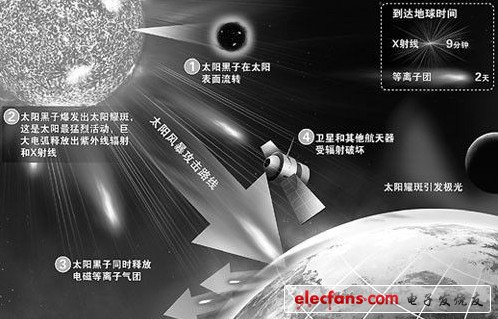In November 2011, 150 GPS engineers gathered at the Stanford Linear Accelerator Center at Stanford University to discuss the market for GPS in the US $ 110 billion market for military and commercial aviation systems. In the meantime, a major issue is that GPS is no longer the only navigation and tracking system on the planet, and some new technologies are posing a threat to the future of GPS.
Compared with the LTE network signal, the GPS signal is eclipsed?
Lightsquared, an emerging LTE operator, admits that its LTE network signals have posed a threat to GPS signals. LTE is a transition between 3G and 4G technologies, also known as quasi-4G. It improves and enhances 3G's air access technology, and uses OFDM and MIMO as the only standards for its wireless network evolution. Compared with 3G, LTE is faster at high data transmission rates, reduces latency and has a wider coverage. LTE mobile broadband technology will rapidly spread in the next five years, but global coverage is limited. And LTE smartphones and tablets will dominate the LTE networking end-user terminal market.
One of the two major threats to GPS that Lightsquared currently poses is that the mobile broadband service it provides is similar to the GPS electromagnetic spectrum block, and it is easy to cause interference to GPS signals. In addition to the Obama administration's authorization to operate on the same spectrum as GPS, Lightsquared has also received approval from the US Federal Communications Commission (FCC) and plans to increase the signal strength from 1.5KW to 15KW. Although the signal strength has not been tested, civilian GPS jammers are already sold online. Because users are worried about police intrusion and employer surveillance, cheap GPS jammers are flooding roads and airports.
The second threat is that LTE signals can penetrate GPS-inaccessible areas such as buildings, rugged mountain terrain, and densely populated urban canyons.
In response to the problem of interfering with GPS signals, Lightsquared announced at the seminar that they have made significant progress in solving the interference problem and showed the tests that have been run. They believe that the problem of GPS interference can be solved, not that the GPS industry previously claimed to the public that GPS interference is an unsolvable physical problem. The company plans to move its LTE spectrum away from the GPS spectrum. This plan will cost $ 100 million and will solve the interference problems of public users and industry GPS equipment. At the same time, they are developing GPS-compatible solutions. And, they plan to allocate $ 50 million to replace or adjust the interfered government equipment.
Even with interference problems, Lightsquared has reached cooperation with multiple companies. For example, in cooperation with PCTEL, a global equipment manufacturer. PCTEL has now developed an antenna that allows high-precision users to adjust their GPS devices to be compatible with Lightsquared networks. Recently, British satellite provider Inmarsat has reached a spectrum sharing agreement with Lightsquared. And claimed that the new technology increased their revenue in the third quarter. Prior to this, their core business shipping industry was hit by low-profit broadband terminals.
Solar storm interference or will destroy GPS signals?

Solar storms have a great impact on earth activity
A related issue is that solar storms will increase the interference effect of the ionosphere. According to the NASA NASA forecast, there will be a powerful solar storm in 2013. The high-energy particle flow generated during the solar storm will seriously damage some detection instruments and computer systems in space flight and will directly threaten them. The safety of the flight crew to space. Solar storms will weaken GPS signals, especially near the equator. Global positioning satellite GPS9783 had a total of 13 bit flip errors during the 22-week peak year of solar activity. The Wide Area Augmentation System (WAAG) proposer proposed some schemes to reduce sunspot activity, that is, to recommend the GPS system to be layered together with the European and Chinese navigation and tracking systems. In addition, a wide area augmentation system reference station was established in the southern hemisphere.
Boeing proposed another solution: using a new non-GPS system capable of indoor navigation, restarting a low-orbit Iridium satellite network, loading 77 satellite firmware to deliver location services with 100m accuracy.
In view of the limitation that GPS cannot achieve indoor positioning, the future development of positioning technology will eventually promote some services that can reach places that GPS cannot cover. At the same time, in case of a real solar storm, where should GPS go?
3.5mm Wire To Board Connectors
3.5mm Wire To Board Connectors.Standards
Wire-to-board connectors carry approvals from various national and international organizations. In North America, they often bear marks from Underwriters Laboratories (UL) and/or the Canadian Standards Association (CSA).
A wire to board connector for the European marketplace should comply with the Restriction of Hazardous Substances (RoHS) and Waste Electrical and Electronic Equipment (WEEE) directives from the European Union (EU). Wire-to-board connectors that comply with other requirements are also available.
BS 9526 N0001 - Specification for multi-contact edge socket electrical connectors.
3.5mm Wire To Board Connectors
ShenZhen Antenk Electronics Co,Ltd , https://www.antenkcon.com
